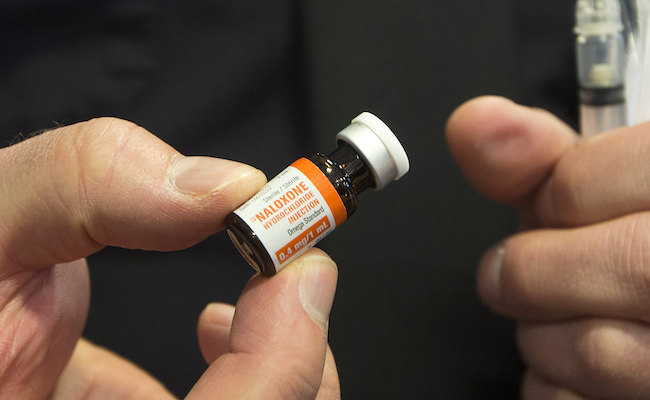
18 Apr The White House Is Spreading Fentanyl Panic
As the opioid epidemic occupies headlines, so does scaremongering — and right now, fentanyl is enemy number one.
Depending on the news you read, you may have heard that coming into contact with just a few grains can be lethal or that it’s being added to recreational drugs like marijuana and cocaine. Other sources claim that fentanyl poses an existential threat to first responders like police and firefighters.
This rhetoric increased in intensity when the White House weighed in, using fentanyl panic as a smokescreen for advancing its own sinister policy agendas — including demonizing immigrants for the uptick in overdose deaths.
What you’re hearing about fentanyl from the mass media is … not exactly true. It’s important to separate fact from fiction when talking about fentanyl and other opioids so that we can develop the best policy approaches to a very serious problem: 130 Americans die every day from overdoses, with synthetic opioids in particular accounting for a growing share of that number.
The first thing to know about fentanyl is that it’s a synthetic opioid developed in the 1960s — one that’s highly potent and extremely effective in the management of pain; it’s also used in anesthesia, and there’s a chance you’ve had fentanyl if you’ve had surgery recently.
Fentanyl is available by prescription in nasal, oral and topical formulations — typically for people with significant chronic pain or pain associated with a terminal illness like cancer. Like other opioids, it can also have recreational effects for some people, and consequently an illicit market has developed for the drug.
So, is it true that you can overdose nearly instantly just from coming into content with a minuscule amount of the drug?
Well, no. Fentanyl is absorbed very slowly through the skin, for example, and while inhaling it probably wouldn’t be great, you’re not going to drop dead if you’re in a room where fentanyl is present. It’s actually really hard to accidentally ingest enough fentanyl, or any other opioid, to kill you.
If you’ve read stories about first responders and working dogs becoming seriously ill or dying at the site of drug busts, there may be something else going on. Lots of substances in the environment, including things associated with drug production and packaging, can cause serious environmental illnesses, but fentanyl likely isn’t one of them — something even the DEA admits. Panic attacks, or the “nocebo effect,” may be to blame.
And about those “laced” drugs that allegedly contain fentanyl: While fentanyl is sometimes used to cut other drugs, the problem isn’t as widespread as people might have you believe. The White House in particular is pushing this myth hard, raising the specter of a deadly payload in every dose of recreational drugs. We’re just not finding evidence of this kind of drug contamination in the field.
Distributing misinformation about fentanyl’s lethality has direct implications for how we treat people who need help; if you believe coming into contact with fentanyl is dangerous, for example, you might not render aid to someone who is clearly overdosing, fearing you might get hurt. Similarly, failing to correct the record on fentanyl in other recreational drugs can create needless confusion and panic.
It’s important to make sure people have accurate information when talking about any public health issue, including opioids and overdoses.
If you don’t already carry naloxone, also known as Narcan, please consider getting some and adding it to your car and home first aid kits. It’s extremely affordable — or free through some community organizations — and easy to administer. You could save someone’s life.
Photo credit: Premier of Alberta/Creative Commons
[ad_2]
Source link



No Comments